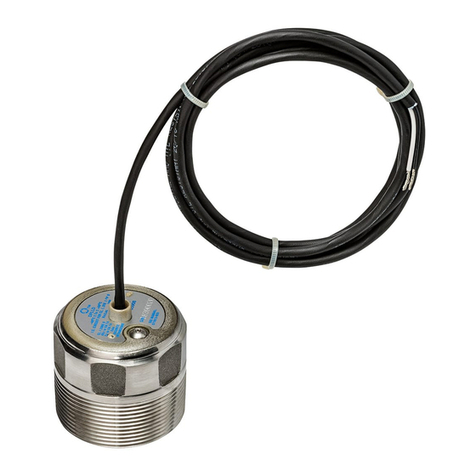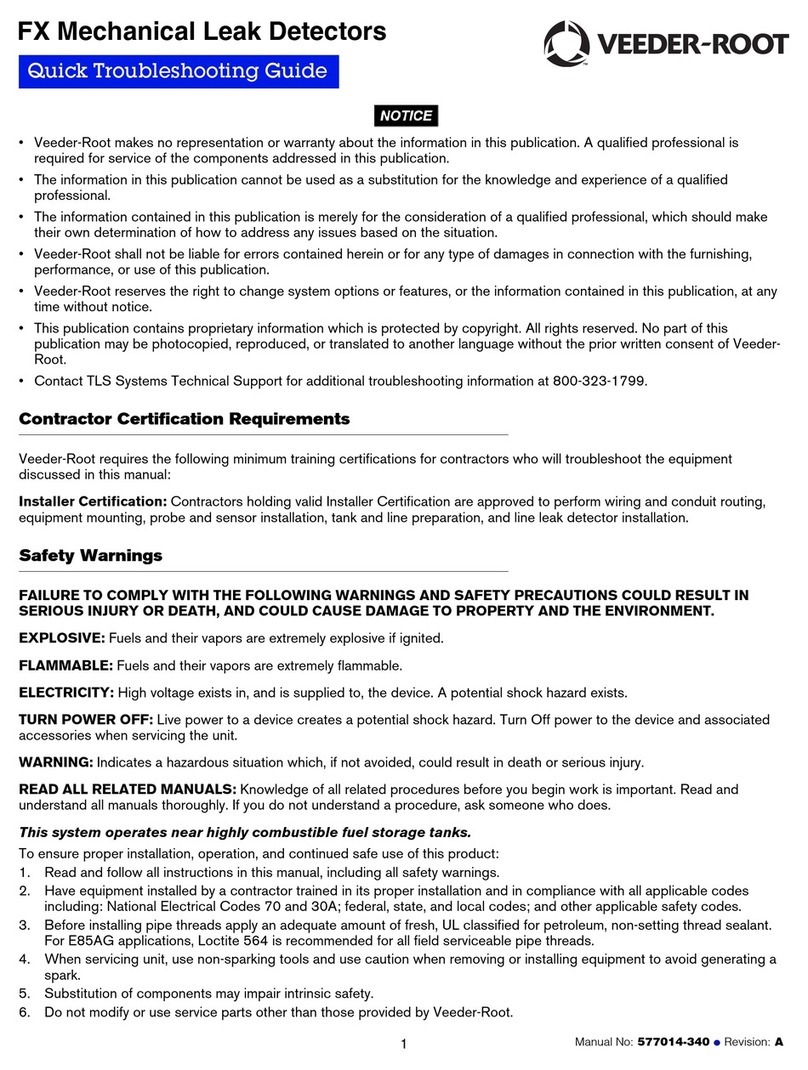
VPS Installation Veeder-Root Parts
55
11 1 Ball Valve, 3-way, 1/4” 576008-649
12 1 Copper tube, soft, 1/4” OD, 36” length 332151-001
Table 2. Vapor Vent Stack - VPS Installation Kit (P/N 330020-630)
Item Qty. Description P/N
1 1 Vapor Pressure sensor 331946-001 or 861190-201
2 1 Enclosure, NEMA 4X- modified w/included fasteners 333004-001
3 1 Panel, composite, modified 333005-001
4 2 Male elbow 169CA-4-4, brass 1/4" tube to 1/4" pipe 579066-001
5 2 Male connector 68CA-4-4, brass 1/4" tube to 1/4" pipe 514100-430
6 1 Plug 59CA-4, brass 1/4" tube size 514100-432
7 1 Bulkhead union 62CABH-4, brass 1/4" tube size 514100-476
8 2 Washer, 0.469 x 1.125 x 0.063”, zinc 510904-573
9 1 Tube - copper, 1/4” OD, short S bend 333006-001
10 1 Tube - copper, 1/4” OD x 8” length 333018-001
11 1 Ball valve, 3-way, 1/4” 576008-649
12 1 Hub, conduit, liquid tight, 1/2”, zinc 576010-715
13 3 Conduit clamp, 2”, steel - std duty 514100-478
14 3 1/4-20 x 0.75” hex bolt - steel 026-620-1
15 3 Washer, flat, 1/4”, zinc 514100-374
16 3 1/4-20, hex nut w/lock washer 511000-251
17 1 Vent, porous, flanged, 0.17 x 0.42” 514100-477
18 2 Wire nut 576008-461
19 1 Sealing pack 514100-304
20 1 Cord grip 331028-011
21 2 Tie wrap 510901-337
22 1 Shim 332061-001
23 1 Vapor Pressure Sensor Installation Guide 577013-797
24 1 ISD Quick Reference Guide - TLS-3XX Consoles 577013-842
25 1 ISD Quick Reference Guide - TLS-450PLUS Consoles 577014-462
26 1 Warranty card, ISD system 577013-868
27 2 Conduit clamp, 3”, steel, std duty 514100-482
Table 1. Under Dispenser - VPS Installation Kit (P/N 330020-433 [included in kit 330020-515])
Item Qty. Description P/N





























